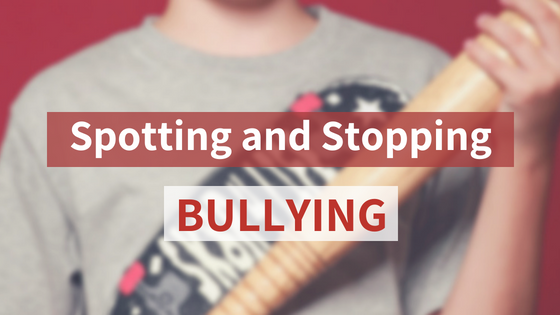Spotting and Stopping Bullying
Posted by Jamie Merenciano


Bullying, by definition, is when an individual or a group of people with more power, repeatedly and intentionally cause hurt or harm to another person or group of people who feel helpless to respond. In a published survey by the Interactive Autism Network in 2014, it was found that 63% of 1,167 children with ASD, ages 6 to 15, had been bullied at some point in their lives, while only 12% of the siblings of these children with ASD (neurotypical kids) were bullied in school.
Bullying is damaging to a child’s self-esteem, mental health, social skills and progress in school. This is true even for neurotypical kids and even more damaging for kids with autism and can trigger aggressive behavior and meltdowns. So how do you spot bullying and what can you do to stop it?
Bullying can be difficult to spot, especially with children with autism. When a child is nonverbal, has limited verbal skills or generally has difficulty communicating, he or she may have a hard time communicating his or her experience.
There is no single way to tell if a child with autism is bullied or not but there are signs you can look out for in children with autism.
- Unexplained bruises, scratches and cuts
- Missing or damaged belonging or clothing
- Refusing to go to school
- Afraid of walking or taking the bus to school
- Suddenly performing poorly in school
- Change in sleep and/or eating pattern
- Gets angry or emotional more than usual
- Seems withdrawn
- Disrupts class out of nowhere
- Starts bullying others
Talking to your child.
If you suspect that your child is being bullied, it is best to talk to him or her first. Since many kids in the spectrum have a hard time expressing emotions or relaying experiences, it would be best to be creative. You can try and ask your child to draw pictures or point pictures to show what’s bothering him or her. You can also try to ask your child to reenact his or her experience using toys. You can also list down your child’s activities throughout the day and have him or her identify what he or she feels during those activities.
Talking to school authorities.
If your child is being bullied at school, getting the school involved is your next step. Since teachers are trained to spot bullying, getting their help is very important. You need their cooperation so make sure that when you meet with them you’re there to get them onboard. Be assertive and not angry; find a solution rather than blaming them.
During the meeting, explain to them what’s happening and how it is affecting your child. Teachers can also help you identify the times when your child is most vulnerable to bullying. Most schools have strategies in place to prevent bullying and you can discuss these strategies with the school authorities to figure out the best steps to take to protect your child from bullying.
Again, keep in mind that you’re after a concrete solution to the issue at hand and that you can get all the help you need to resolve the problem. Bullying is a big problem but know that there’s always a solution to any problem.

